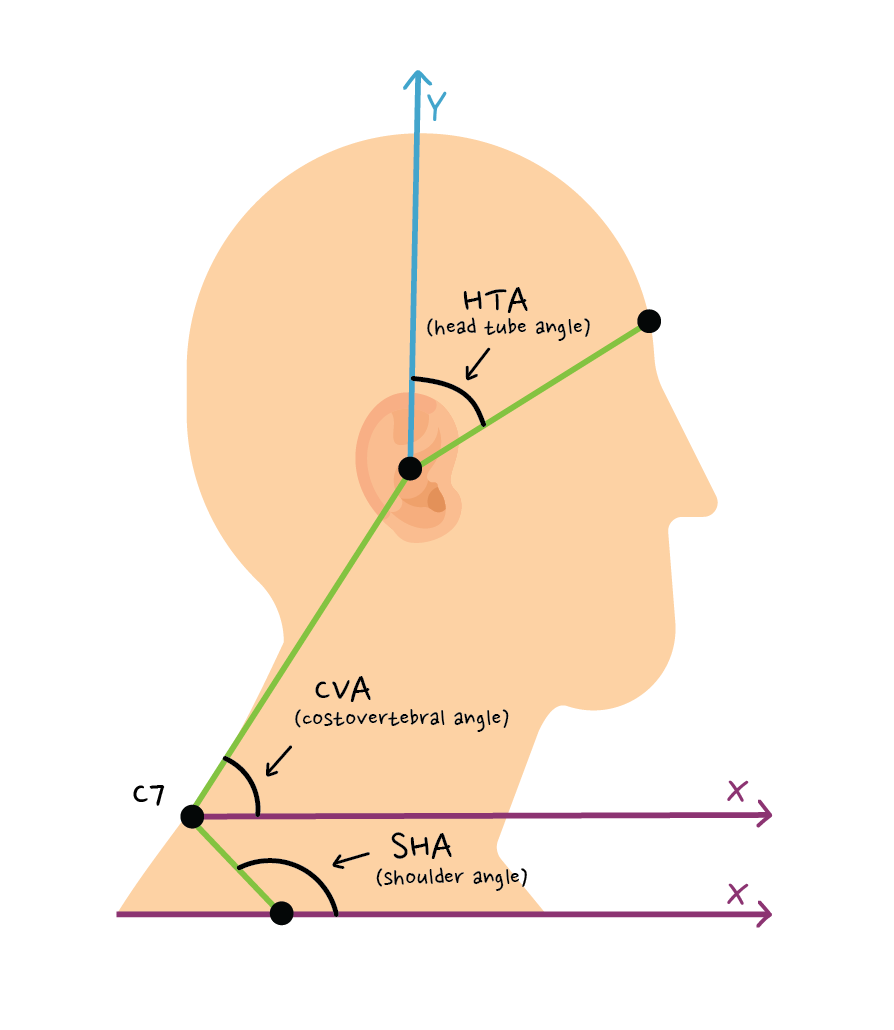Video 3 using mobile application
The tests may be useful to objectively determine the position of the shoulder girdle and cervical spine, which will allow the effectiveness of the treatment to be monitored.
These phone applications are often free and allow more thorough measurements.
Simple and easy to use protractor. The app allows you to measure angles from images or from camera, in real time. With Angle Meter 360 an unlimited number of angles can be measured simultaneously. Adding new devices to an object or removing old items allows you to compare data from multiple angles at once. Scaling, moving the measured object, as well as the ability to change the colors of the tools, allows you to measure angles easily, quickly, very accurately.
Measurement of neck angles: two photos are taken of each participant according to defined criteria. To take the photos, the pendant pewter is fixed to the wall next to the chair and the mirror is placed opposite the participants at eye level. The subject is seated on the chair and then the points defining the planes are marked on them using marker dots: vertebra C7, the middle of the two eyebrows, the tragus and the tip of the acromion. The photographs are taken at a distance of 1.5 m from the participants, first in a neutral position (corrected position) and then also in a habitual position (relax, siting in usual position). The gravitational force acting on the pendant ensures the vertical orientation during the test. The perpendicular lines projected onto the vertical vector point to the right in the digital photographs and form the X-axis, the Y-axis being the vector provided by the pendant itself. The photos are evaluated using the Angle Meter program, first the auxiliary lines are drawn and then the CVA, HTA and SHA angles are measured as shown in the figure.
– CVA: craniovertebral angle, the line drawn through the points of the tragus and C7 processus spinosus and the angle enclosed by the horizontal.
– HTA: head-tilt angle, the angle enclosed by the line joining the points of the tragus and labella and the vertical (y-axis) drawn on the tragus.
– SHA: angle characterising the position of the shoulder, the line joining the acromion and the spinosum of the C7 processus and the angle enclosed by the x-axis.



Leave a Reply
Want to join the discussion?Feel free to contribute!